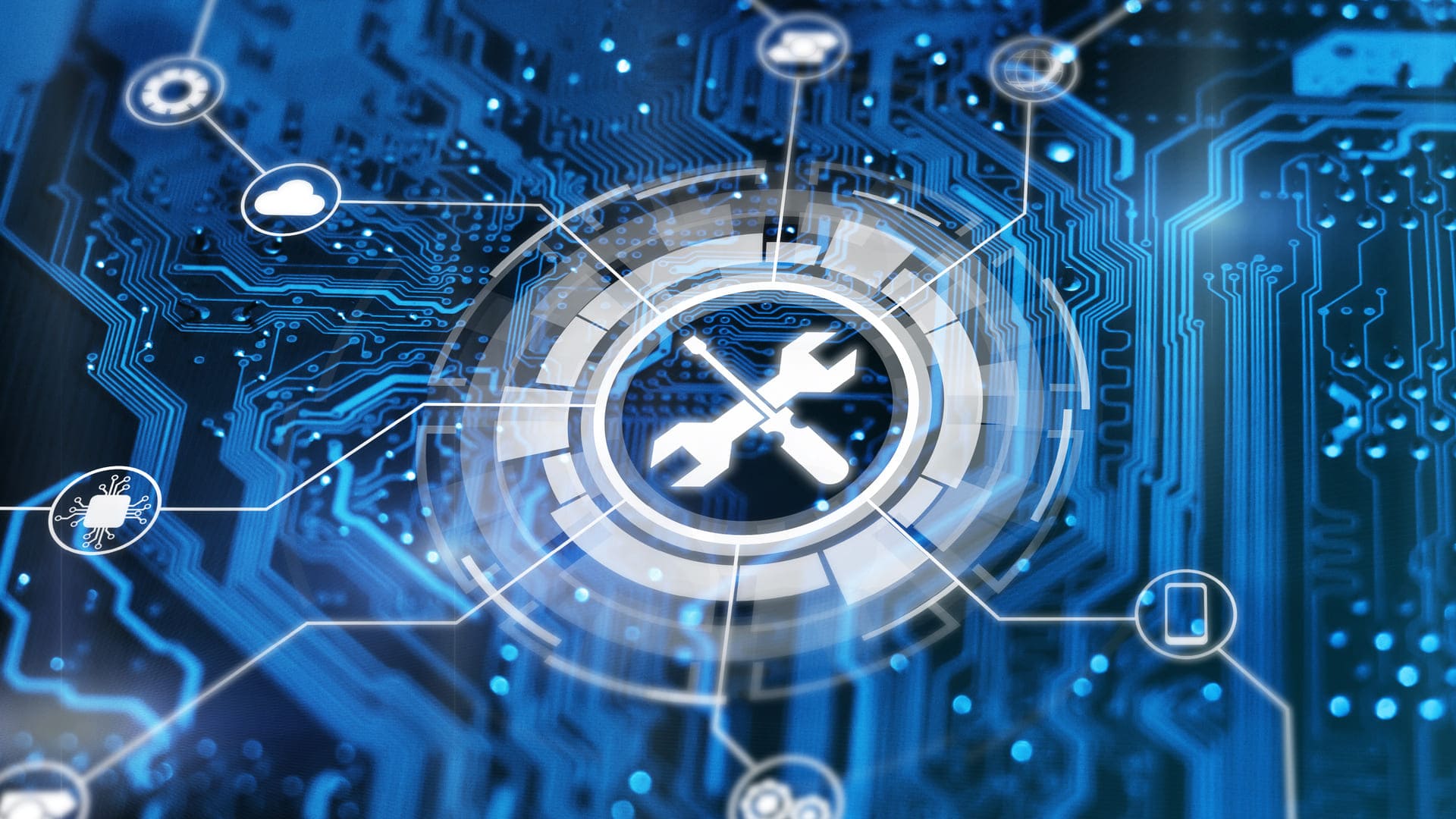¿What is maintenance in industry?
Plant maintenance in industry is the set of operations necessary to ensure that a factory’s facilities, processes and machinery are in optimal operating conditions, which contributes to the extension of their useful life.
Designing a maintenance plan is absolutely essential for any company, but each organisation decides which resources are devoted to each of the existing types of maintenance (corrective, preventive and predictive) according to its needs and capabilities.
However, even when we have been talking about the evolution towards Industry 4.0 for years, corrective maintenance is still the most common one, which is indicative of the lack of a firm commitment (on the company’s boards part) to the adoption of key systems for smart factories, such as predictive maintenance.
Nonetheless, an insufficient investment in preventive and, above all, in predictive maintenance is seriously detrimental to a company’s activity, since the corrective maintenance’s goal is to solve the error once it has already occurred. Therefore, it does not prevent, for example, catastrophic failures, product loss or accidents.
In any case, before explaining what predictive maintenance is and its importance for the industrial refrigeration sector, we will pinpoint the main differences between the different kinds of plant maintenance in industry and we will explain why preventive maintenance is still fundamental for any business.
¿Why is preventive maintenance important?
Having signalled the similarities and differences between predictive, preventive and corrective maintenance, it is possible to state that they are not mutually exclusive. That being said, it cannot be denied that the amount of resources (material, financial and human) dedicated to each of them reveals the executive’s commitment to the factory’s modernisation process, which is related to its adaptation to current regulatory, commercial and environmental requirements.
Preventive maintenance, in this sense, is the intermediate step between a corrective and a predictive perspective. Specifically, it consists of the routine (‘scheduled’) revision of the factory’s facilities to avoid any unforeseen issue that could lead to halt production indefinitely. Obviously, this type of maintenance also requires the stoppage of the machine, but, in this case, this pause is planned, so that its adverse effects on production can be minimised. Apart from the inspection, preventive maintenance includes actions such as oil changes, adjustment/replacement of components, etc.
Furthermore, by acting before the failure takes place, it is possible to know the appliance’s state, which facilitates planning its replacement according to its estimated useful life. For this reason, it is crucial to keep an updated record of the inspections in order to achieve an optimal maintenance status. Obtaining all this information will also help to reduce risks and avoid unforeseen costs derived from applying a corrective kind of maintenance. Even so, preventive maintenance does not take full advantage of the potential offered by the company’s big data, so those directive boards determined to transform their business into a smart factory should choose to devote a higher percentage of their maintenance budget to predictive maintenance.
Differences between predictive, preventive, and corrective maintenance
Corrective Maintenance:
- The machine’s failure has already occurred.
- Does not prevent:
- Machine failure.
- From halting production.
- Potencial hazards to the workforce.
- It does not use big data.
- It does not need advanced technological tools.
- The main responsible is the supervisor.
Preventive Maintenance:
- The machine’s failures has not occurred yet. Maintenance is done by protocol.
- Does not prevent:
- Machinery failure related to external elements.
- From halting production unexpectedly.
- Potencial hazards to the workforce.
- It does not use big data intensively.
- It does not need the most advanced technological tools, although it does require sensors.
- The main responsibles are the supervisor and the factory’s monitoring system.
- Increases / Improves:
- The equipment’s useful life.
- The quality standards of the production process in which the machine that will undergo maintenance is involed.
- The performance and efficiency of that process.
Predictive Maintenance:
- The machine’s failures has not occurred yet. Maintenance is done because there will be a failure for sure and the related causes/variables are known, so that the timescales for action can be planned.
- It prevents:
- Machinery failure related to external elements.
- From halting production unexpectedly.
- Potencial hazards to the workforce.
- It uses big data intensively.
- It needs the most advanced technological tools, as well as sensors, automatons, etc.
- The main responsibles are the supervisor and all the factory’s monitoring automation systems.
- Increases / Improves:
- The equipment’s useful life and optimisation.
- The quality standards of the production process.
- The performance and efficiency of that process.

Industrial refrigeration maintenance
When we talked about predictive analysis in industry, we mentioned that one of its advantages was the possibility of identifying dependencies between variables in order to predict their evolution and that, to do so, it was necessary to resort to real-time information and data records, as well as to algorithmic and statistical models that implement machine learning techniques. The implementation of this methodological basis in industrial maintenance is known as predictive industrial maintenance. This is one of the less common types at present, but it is the most important in smart factories, since it provides with a series of unique benefits for this field and, especially, for industrial refrigeration.
Industrial refrigeration companies offer their services to a wide range of sectors, such as food and pharmaceutical industries or logistics. Their needs are very diverse and so are their maintenance processes and the negative effects that result from their inefficiency. For example, a failure in logistics can lead to delays, product loss and customer dissatisfaction (among other problems), while the ineffective monitoring of a lab’s refrigeration system can ruin a vaccine, a drug or the research’s breakthroughs. The aim of predictive industrial refrigeration maintenance is, as a result, to offer adaptative solutions to the most immediate problems, but, above all, to anticipate a company’s maintenance requirements in the medium and long term.
To this end, predictive industrial refrigeration maintenance requires the extraction of large amounts of data from the factory’s facilities, machinery, stock, workflows, etc. Then, this information must be processed to create connections between the different variables that affect production and, thanks to this, key information can be extracted to anticipate failures, but also to improve maintenance operations. This is because industrial monitoring and IoT widen their scope by comparing this data with other external and internal variables (with respect to the machines) to optimise the entire plant’s operation, to decide which is the best moment to replace a critical component or to schedule a technical shutdown, among other advantages.
However, the concept of predictive industrial refrigeration maintenance only describes the way in which such supervision is carried out. Thus, in the following section of this article we will introduce some industrial maintenance techniques.
Industrial refrigeration maintenance techniques.
In several of our articles we have already explained in detail the most consolidated predictive refrigeration maintenance techniques, but here is a list of those that can be adopted in any refrigeration plant in general.
- Vibration analysis. It takes into account those appliances’ characteristics that provoke vibrations (such as rotation speed or type of support) to detect anomalies and diagnose them.
- Temperature control. A facility’s equipment needs to operate in optimum temperature ranges as failing to do so may result in irreparable damages.
- Radiography. On many occasions, errors are located inside the machines (screws, welds, small parts, etc.), so X-rays can be used to detect them more easily.
- Visual exam. This is an extremely simple but helpful technique which consists in inspecting the equipment visually in search of cracks and other flaws.
- Impact speed. Pulses are used to check the speed of collision between the fixed runway and the rolling elements.
- Infrared. Thermographic cameras are used to identify hot spots that may be caused by flaws in the circuits or in any electronic or mechanical component of the machine.
- Pressure monitoring. Allows the detection of leaks or obstructions, which can lead to graver problems such as floods.
- Ultrasounds. The detection of sounds has multiple applications, such as locating leaks or problems in electrical circuits, as well as identifying mechanical or sealing faults.



